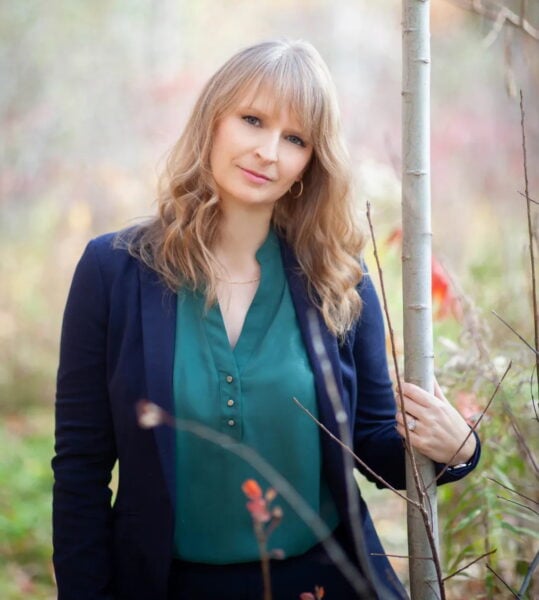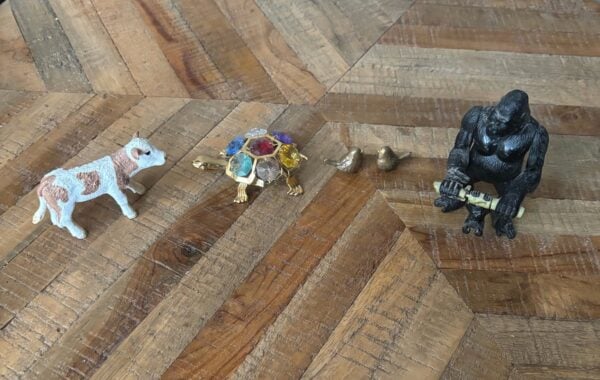I was thrilled to have this chat with Kendra Coulter, author of Defending Animals and the newly released novel The Tortoise’s Tale. Dr. Coulter is a professor at Huron University College at Western University, where she leads the world’s first major in animal ethics and sustainability leadership, and she is a fellow of the Oxford Centre for Animal Ethics in England.
Q: The Tortoise’s Tale was inspired by Jonathan, the 192-year-old Seychelles Giant Tortoise, who has outlived generations of humans. Was he also the inspiration for the structure of the novel?
A: He inspired the idea of a memoir and the importance of human humility, then it was a very free flowing writing process. I knew how I wanted to start and end the novel (right down to the final song lyric — but please don’t skip ahead, dear readers!) and had three bullet points with major phases in the evolution of the estate where the tortoise is housed. From there I focused on the distinct mind, feelings, and experiences of our esteemed narrator and her multispecies community.

Q: Having a nonhuman narrator for a novel is a bold choice, and challenging as well. Was it always your intention to have Magic as the narrator? How did you find her voice?
A: I wanted her to be indelible. Because I knew her true age, I knew she had to epitomize sagacity, regalness, and hope but that humor was also crucial — how else can you remain steadfast among people for that long. She sees extensive changes in fashion, social norms, music (both human and avian), and the environment, yet maintains her commitment to honor, justice, and correct grammar. Plus, because she is a reptile, she can comment on mammals with both empathy and distance; for example, the fact that female mammals work hard caring for their offspring and produce milk to nourish their babies. She also notes that only one species chooses to consume the milk of other species.
Q: In your nonfiction book Defending Animals, you bring readers into the lives of dozens of humans who advocate for animals, from nonprofit volunteers to law enforcement officers. In what ways did this book influence the research and writing of The Tortoise’s Tale, which is your first novel?
A: The primary purpose of my life is to improve and save animals’ lives and when I reached beyond academic and media writing to trade nonfiction with Defending Animals, I liked being able to maintain rigor while centering stories and writing with more heart. Expanding into fiction is truly a thrill. I think we have particularly embodied engagements with novels as both writers and readers, and that even though the stories are imagined, they are filled with real truth. Knowing that my words affect not only people’s minds but also their emotions and spirits is deeply meaningful.
Q: Your novel brings to mind Gwyn Hyman Rubio’s novel Love and Ordinary Creatures, which is narrated by a cockatoo named Caruso, another long-living being who by necessity has many caregivers, which profoundly influences his life. In what ways does Magic’s long lifespan affect who she is?
A: The tortoise would like to make Caruso’s acquaintance, undoubtedly. She experiences everything profound about life multiple times and that certainly changes her. Yet she continues to be propelled by possibility and feels everything in such a pure and authentic way. There is no pretense, manipulation, filter, or phoniness; she is militantly honest. She is affected by the multi-faceted impacts of living a (very) long life yet her ethical center never wavers. That is inspiring, especially in moments like these.

Q: Being in captivity and finding herself in the care of so many different humans, Magic witnesses the horrible ways humans treat other animals — yet she and several others also receive kindness and compassion along the way. How did you find this balance, and what do you hope readers come away with in the end?
A: I pictured a wave continuously moving up and down to very deliberately find the balance in terms of emotions. Through the tortoise, we can see the spotlight, the shadows, and the vibrant but thorny landscapes in between, literally and metaphorically. The reality of how people treat animals has improved in important ways and gotten worse in others, particularly for the animals who are hidden, whose sentience and individuality are denied or ignored, and who are seen as disposable, the way tortoises were. I hope readers both see and feel the roots and branches that connect us all — including the animals who are rarely included in tapestries of compassion and solidarity.
Q: Magic’s long life sees social, cultural, and political change — yet most people’s attitudes toward animals remain largely the same; as one example, both in real life and in The Tortoise’s Tale, humans tend to refer to nonhuman animals as it. Why do you think humans are still stuck when it comes to how we view animals, and what do you feel are the best ways to open hearts and minds?
A: Media/journalistic style guides need to change, as a start. The words we use reflect foundational and normalized ways of thinking — and acting. Few people would refer to their dog or cat as an it, but once animals become more abstract or distanced, the “it” creeps in and is part of why atrocious cruelty is not only legal but accepted, especially when profit is involved. The very idea of referring to a sentient being as an object is absurd, but with dangerous and fatal consequences. The tortoise feels strongly about this and so do I (my students can confirm!).
Q: It’s an immense challenge to write about animals authentically, in a way that honors their true selves. What advice do you have for fiction writers who want to include nonhuman animals in their work?
A: Do we have an hour so I can try to properly answer that? [Laughs.] Succinctly, including other animals can be done in different ways, all of which can be compelling. Animals are most commonly presented in fiction as analogies for people, but look closer and many of those framings don’t hold (think Boxer, the horse in Animal Farm). The tortoise is her own being, a storyteller, a friend, a community member, an ally, an ambassador, a captive wild animal and endangered species, and an allegory for women, marginalized folks, other animals, and our precious yet vulnerable planet. She is simultaneously a prism who offers light, color, and clarity. All of those identities are vital.
We can also write animals who don’t enlist a written human language but rather use their own ways of communicating which other characters or authors can translate and elucidate. The animals around the tortoise speak all the time, audibly, bodily, and behaviorally, and she works to understand what they’re saying about their interests, feelings, and lives. We could all learn from that.
Finally, sometimes the best way to help animals is to include them in meaningful ways yet focus on people and our actions and inaction. I hope there are places for all of these kinds of multispecies texts.
Q: What are you working on now?
A: Centering horses, burros (wild donkeys), and soon, elephants. I cannot overstate the joy I feel creating and imagining alongside animals, not to speak for them, but rather to amplify their voices and to invite and challenge our species to evolve from simply human to truly humane.

Midge Raymond is a co-founder of Ashland Creek Press. She is the author of the novels Floreana and My Last Continent, the award-winning short story collection Forgetting English, and, with John Yunker, the suspense novel Devils Island.
